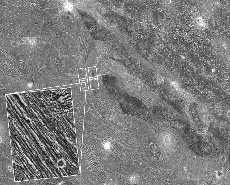This image shows the dark terrain of Ganymede.
Click on image for full size
NASA
Does Ganymede Have a Surface in Motion?
There has been no icy volcanism on Ganymede, nor continental drift, but it does seem that there have been movements of the surface.
Examination of the surface of Ganymede reveals many kinds of faulting. These provide evidence of the kind of pushing and stretching which the crust of Ganymede has undergone through time.
Examination of the surface of Ganymede shows:
- rifting (like continental rifting of Earth)
- faults which cut the surface into a leaning stack of "dominoes"
Examination of the surface also shows that the younger areas were "pushed and shoved" differently than the older areas.
This style of icy-crustal-movement proves to be different from either that of Callisto or Europa. (The other major moon of Jupiter, Io has a more Earth-like form of volcanism.) The difference has to do with heating in the interior of Ganymede
Last modified February 26, 2007 by Lisa Gardiner.
You might also be interested in:
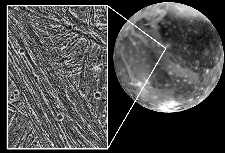
Instead of icy-volcanism, the surface of Ganymede reveals gradual surface deformation and stretching, a stretching similar to the crustal deformation of the Earth. In this case, the folding and stretching
...more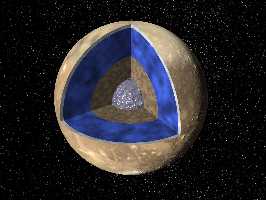
The diagram to the left shows a cutaway of the possible inside structure of Ganymede, based on recent measurements by the Galileo spacecraft. It shows a small core of metal, overlain with some rocky material,
...more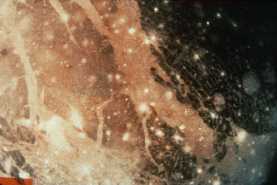
This image shows an example of the light terrain of Ganymede. The image shows the contrast between the light terrain and the dark terrain of Ganymede. The light terrain is where the grooves of Ganymede
...more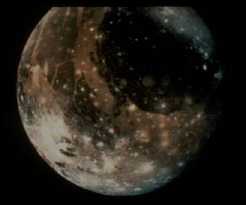
The surface of Ganymede is halfway between that of Callisto and that of Europa. Portions of the crust are of ancient age, while other portions are relatively new. The little white dots shown in this image
...more
Amalthea was discovered by E Barnard in 1872. Of the 17 moons it is the 3rd closest to Jupiter, with a standoff distance of 181,300 km. Amalthea is about the size of a county or small state, and is just
...more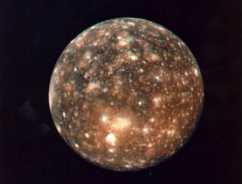
Callisto was first discovered by Galileo in 1610, making it one of the Galilean Satellites. Of the 60 moons it is the 8th closest to Jupiter, with a standoff distance of 1,070,000 km. It is the 2nd largest
...more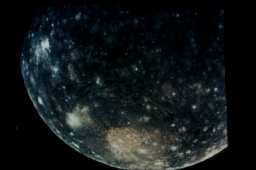
The insides of most of the moons and planets separated while they were forming out of the primitive solar nebula. Measurements by the Galileo spacecraft have been shown that Callisto is the same inside
...more


